Three thousand, seven hundred, and approximately fifty miles. That’s the distance the boys and I traveled this spring break, from Austin to Key West and back again. Our destination was not actually the keys — our main goal was to visit the Everglades, but we were so close to the southernmost point of the so-called contiguous United States — who could resist driving a little farther?
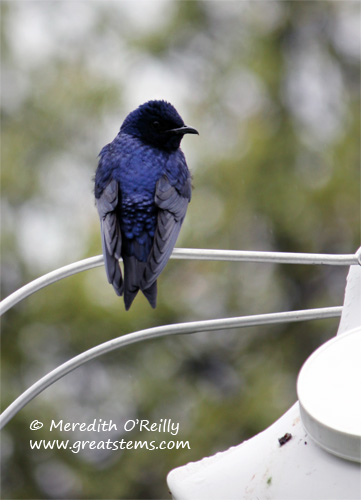 We actually set out from Austin’s own Hornsby Bend, where the CAMN class and I were having an afternoon of birding, and the boys joined in for the fun. Not just birding, mind you, but birding in the rain. This is how you encourage resolve and determine determination — and prove to your kids that they won’t melt in the rain. It was chilly, too — see how the male Purple Martin has fluffed up his beautiful iridescent feathers?
We actually set out from Austin’s own Hornsby Bend, where the CAMN class and I were having an afternoon of birding, and the boys joined in for the fun. Not just birding, mind you, but birding in the rain. This is how you encourage resolve and determine determination — and prove to your kids that they won’t melt in the rain. It was chilly, too — see how the male Purple Martin has fluffed up his beautiful iridescent feathers?
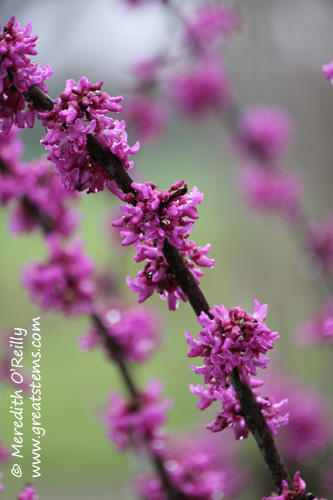 Near the Purple Martin gourds, Redbud blooms added a cheerful spot of vibrant color to the dreary afternoon.
Near the Purple Martin gourds, Redbud blooms added a cheerful spot of vibrant color to the dreary afternoon.
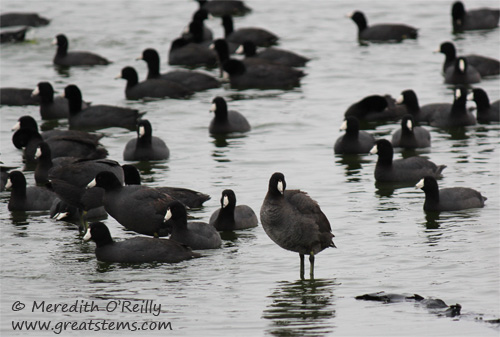 The American Coots were at the first pond en masse, acting a bit like goofy turkeys when they crossed the dirt road in front of my car. Once at the pond itself, they looked like the normal waterbirds that they are.
The American Coots were at the first pond en masse, acting a bit like goofy turkeys when they crossed the dirt road in front of my car. Once at the pond itself, they looked like the normal waterbirds that they are.
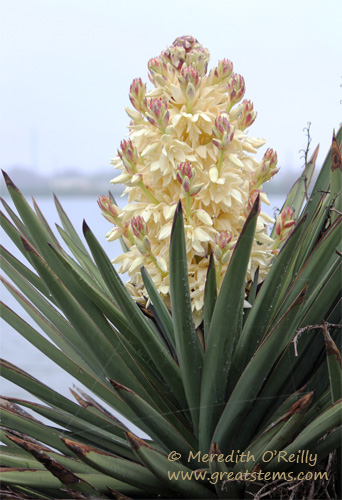 The dreary weather meant that I didn’t take many pictures that afternoon, but I couldn’t resist the lovely blooms of this yucca. Dreary, by the way, is one of my favorite words, not because of what it means but because of how it feels to roll the word off your tongue. Say it with me now: dreary. Dreary.
The dreary weather meant that I didn’t take many pictures that afternoon, but I couldn’t resist the lovely blooms of this yucca. Dreary, by the way, is one of my favorite words, not because of what it means but because of how it feels to roll the word off your tongue. Say it with me now: dreary. Dreary.
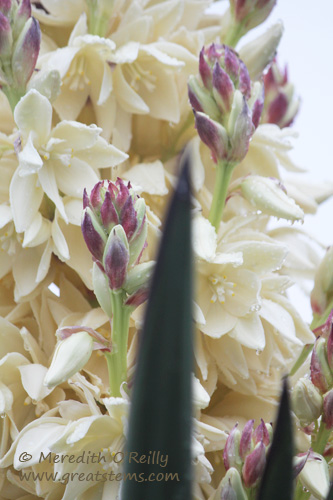
I do want to mention that with every big road trip, I have the boys keep some sort of journal. This time, we brought sketchbooks, because while descriptions and photographs can capture a point in time, a hand-drawn image inspired by nature says even more.
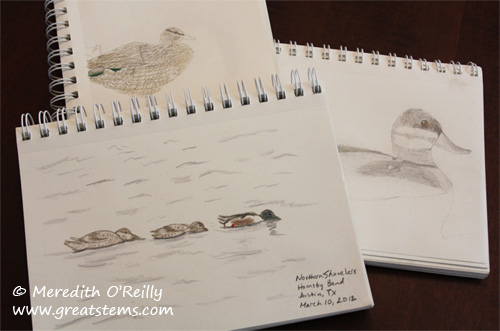 Shown here are Northern Shovelers, a Ruddy Duck, and a Green-Winged Teal, all seen at Hornsby Bend that day. I admit we drew these later in the day, when we had dried out.
Shown here are Northern Shovelers, a Ruddy Duck, and a Green-Winged Teal, all seen at Hornsby Bend that day. I admit we drew these later in the day, when we had dried out.
At this point it was time to get on the road, as we planned to stay in Baton Rouge, Louisiana, that first evening. Allow me to express my disappointment that much of Beaumont, Texas, apparently shuts down by 8pm on a Saturday night — so much for trying out local restaurants there as a midway stopping point. On the plus side, we got to Louisiana that much sooner.
The next day, it didn’t take long to reach Florida, heading around and over the brackish Lake Pontchartrain (we took a drive through New Orleans) and zipping on through Mississippi and Alabama.
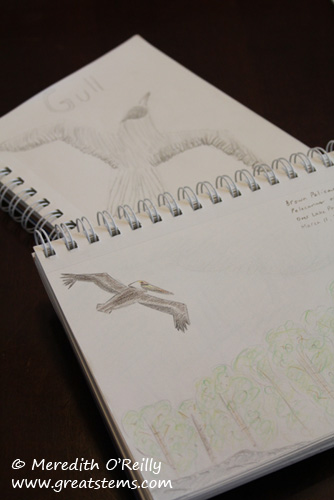 We spotted the first pelican of the trip as we crossed over Lake Pontchartrain, and gulls were plentiful, as well.
We spotted the first pelican of the trip as we crossed over Lake Pontchartrain, and gulls were plentiful, as well.
At last arriving in Florida, I found it amusing that the first birds we saw in the state were familiar dark-feathered birds visiting the dumpsters near the gas station we stopped at. If you guessed they were grackles, you are right — many of them were. But as we listened, we realized that some of them were actually small crows. The nasally caw-caw was the give-away sound, and we IDed the small crows as Fish Crows.
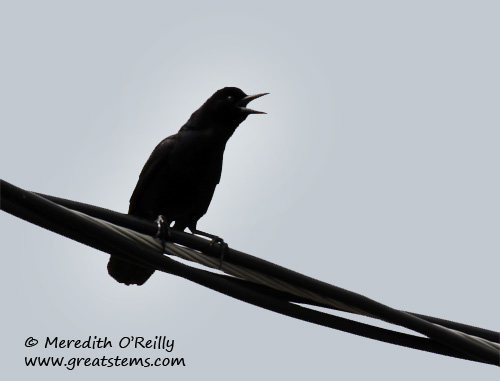
That is one black bird but not a blackbird. It’s a Fish Crow.
Even so, I stared at this picture for a long, long time before officially posting it as a Fish Crow, because the bird wasn’t close enough for its distinguishing features to appear clearly in the image (and it was another dreary day when I took the photo), and even though I waited for it to make its caw-caw before snapping the picture, as you can see from the image it bears too close a resemblance to the grackles it was raiding the dumpster with. But if you study the feathers and the tail and note the black eye, you’ll see it’s a Fish Crow.
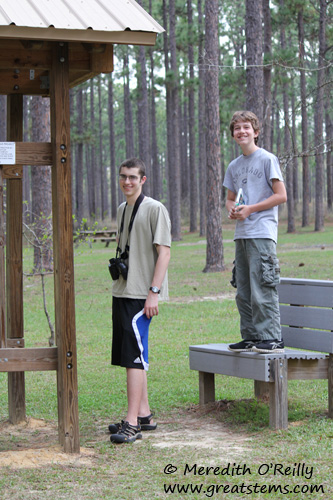 For our afternoon adventure in northwestern Florida, we stopped at Falling Waters State Park, home to the longest waterfall of the state, not because of it being high up, but because it falls into a sinkhole.
For our afternoon adventure in northwestern Florida, we stopped at Falling Waters State Park, home to the longest waterfall of the state, not because of it being high up, but because it falls into a sinkhole.
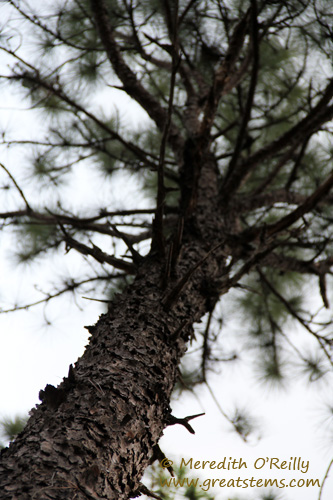
The park is in a pine forest, specifically a forest of Longleaf Pine Trees.
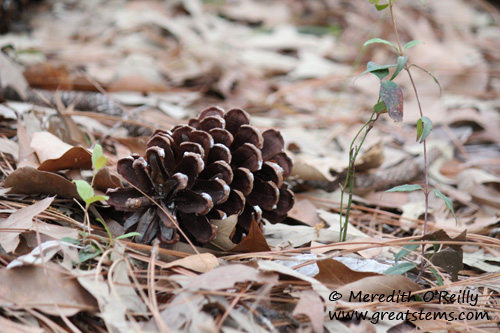
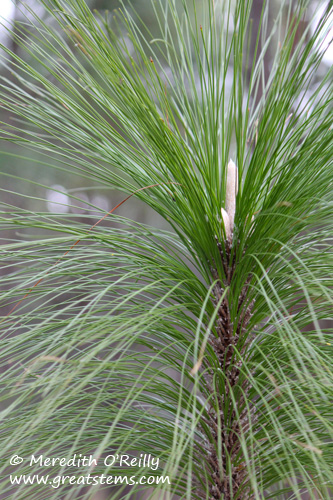
Many of the trees were producing buds, called candles, as you can see in the image above.
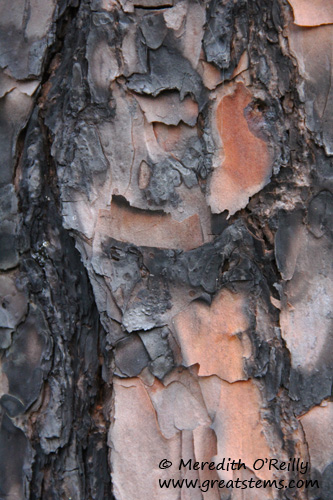 In order to protect the pine forest ecosystem, the park staff and volunteers work to control invasive plants and provide educational signs about native plants along the trails. They also regularly perform controlled burns, following nature’s method of using fire to encourage plant diversity and limit overgrowth.
In order to protect the pine forest ecosystem, the park staff and volunteers work to control invasive plants and provide educational signs about native plants along the trails. They also regularly perform controlled burns, following nature’s method of using fire to encourage plant diversity and limit overgrowth.
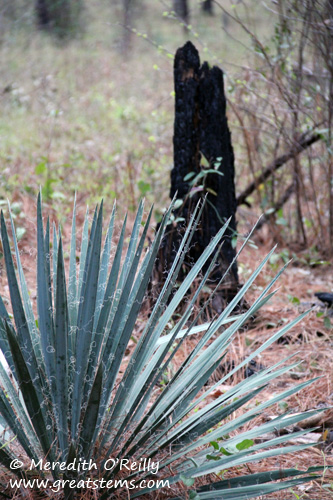
As you can see, plant life recovers, but what is held at bay is the growth of Oaks and other hardwoods that would vastly change the pine forest ecosystem.
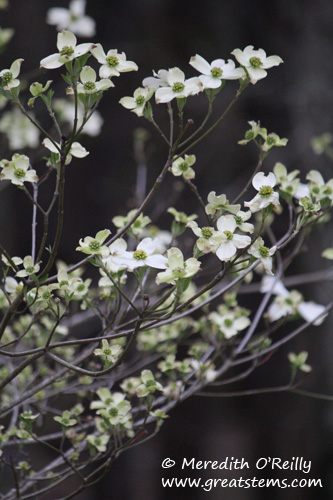 Understory plants like Flowering Dogwood, Redbuds, Buckeyes, and more have the chance to grow.
Understory plants like Flowering Dogwood, Redbuds, Buckeyes, and more have the chance to grow.
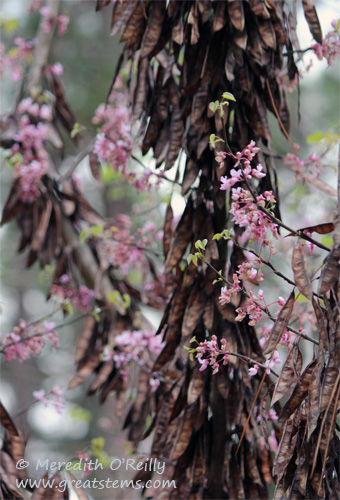 Compared to the Redbud we saw at Hornsby Bend (scroll back up to see the image), this one at Falling Waters was loaded with more seed pods than I have ever seen.
Compared to the Redbud we saw at Hornsby Bend (scroll back up to see the image), this one at Falling Waters was loaded with more seed pods than I have ever seen.
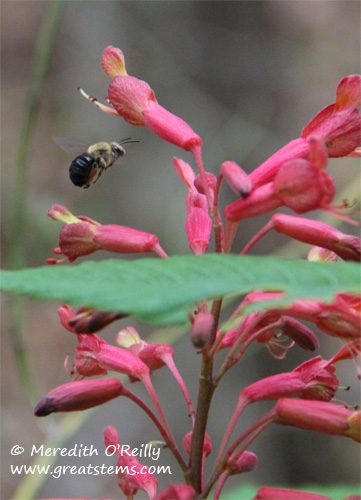
Native bee visiting Southern Red Buckeye

Carolina Silverbells
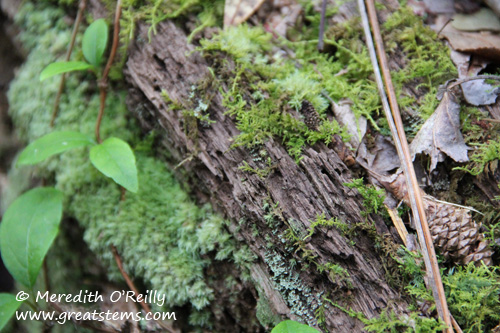
Moss, lichen, and ferns add finishing touches to this beautiful park.
While we were walking the trails, we heard a sound somewhat like a monkey, and though we knew we were hearing a Pileated Woodpecker, it eluded us. We also heard a sound like a squeaky toy — a Red-Cockaded Woodpecker — but once again, we couldn’t locate it, even with the binoculars. Alas. At the small lake, we did see a sign warning of potential alligators… the sign was next to the swimming area, if you could call it that.
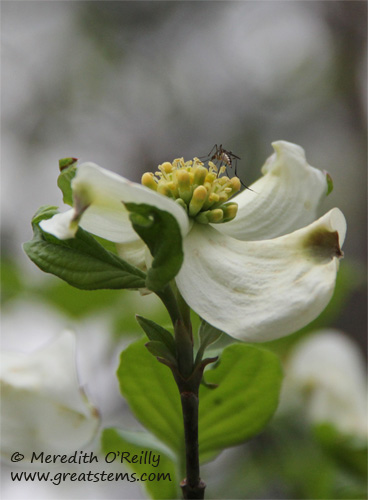
Here a mosquito drinks nectar from a Flowering Dogwood bloom. Many people don’t realize that mosquitoes drink nectar, both males and females. Only when females are aiming to produce eggs do they seek out a blood source. During our whole trip, the most numerous mosquitoes we encountered were in Falling Waters State Park. Perhaps it is because we arrived just before dusk, or perhaps it is because we didn’t bother to put on our herbal mosquito spray. We were good about applying the lemongrass spray the entire rest of the trip. Fast learners, we are.
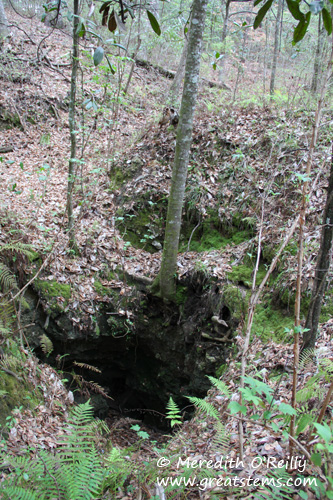
Along the park boardwalk trail, there are several sinkholes. Florida has thousands of sinkholes, formed after acidic groundwater dissolved the limestone rock below the surface, reducing support for the ground above.
The sinkhole that contributes to the state park’s name is shown below. The spring-fed Falling Waters fall 73 feet to disappear in the sinkhole below.
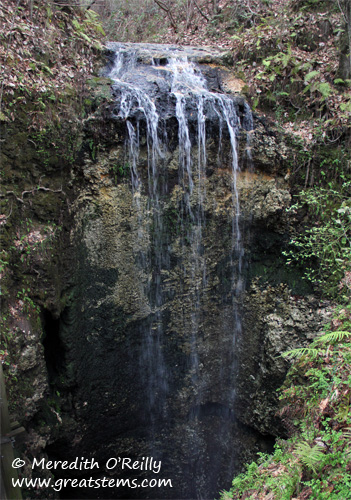

After enjoying our walk in this state park of Florida’s panhandle, we headed to Sarasota along Florida’s western coast. Time for the beach and to finally reach our main destination, the Everglades!
Wonderful pictures. The Purple Martin one is amazing.
I love educational vacations! This sounds just like a trip we would take. Loved experiencing all the birds and wildlife along your trip. I laughed at your comment about Beaumont. We stopped there one time on our way from Mobile to Austin and had the same experience.
Steph, it was my first “purple” Purple Martin picture — they usually look so dark on a bright day.
Karin, we all had so much fun, and the wildlife was truly amazing. It makes me feel better that you had a similar experience in Beaumont. We didn’t even bother to stop on our way back to Austin.
Very cool. My wife also went to Key West (the city of her birth) last week for a mini-reunion with her three sisters. As usual, your photos are fantastic!
How neat that we might have been there at the same time! Of course we were only there for a few hours before we had to head back to the mainland. I hope your wife and her sisters had a great time.
Beautiful photos, and the sketchbooks are a great idea! There is some talent there it seems.
Thanks for sharing the trip!
The sketchbooks were fun. I hope the boys will join me in doing much more of that!
Wow – just wanted to comment on your gorgeous photos. Some of those close-up shots are spectacular!